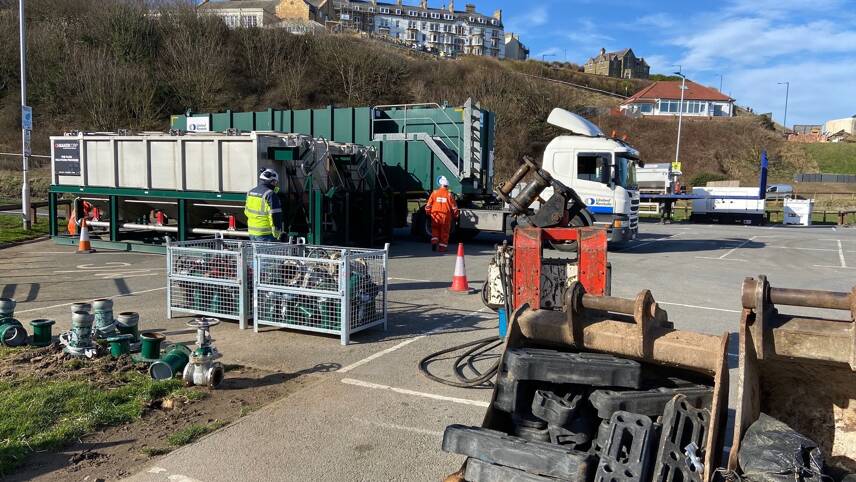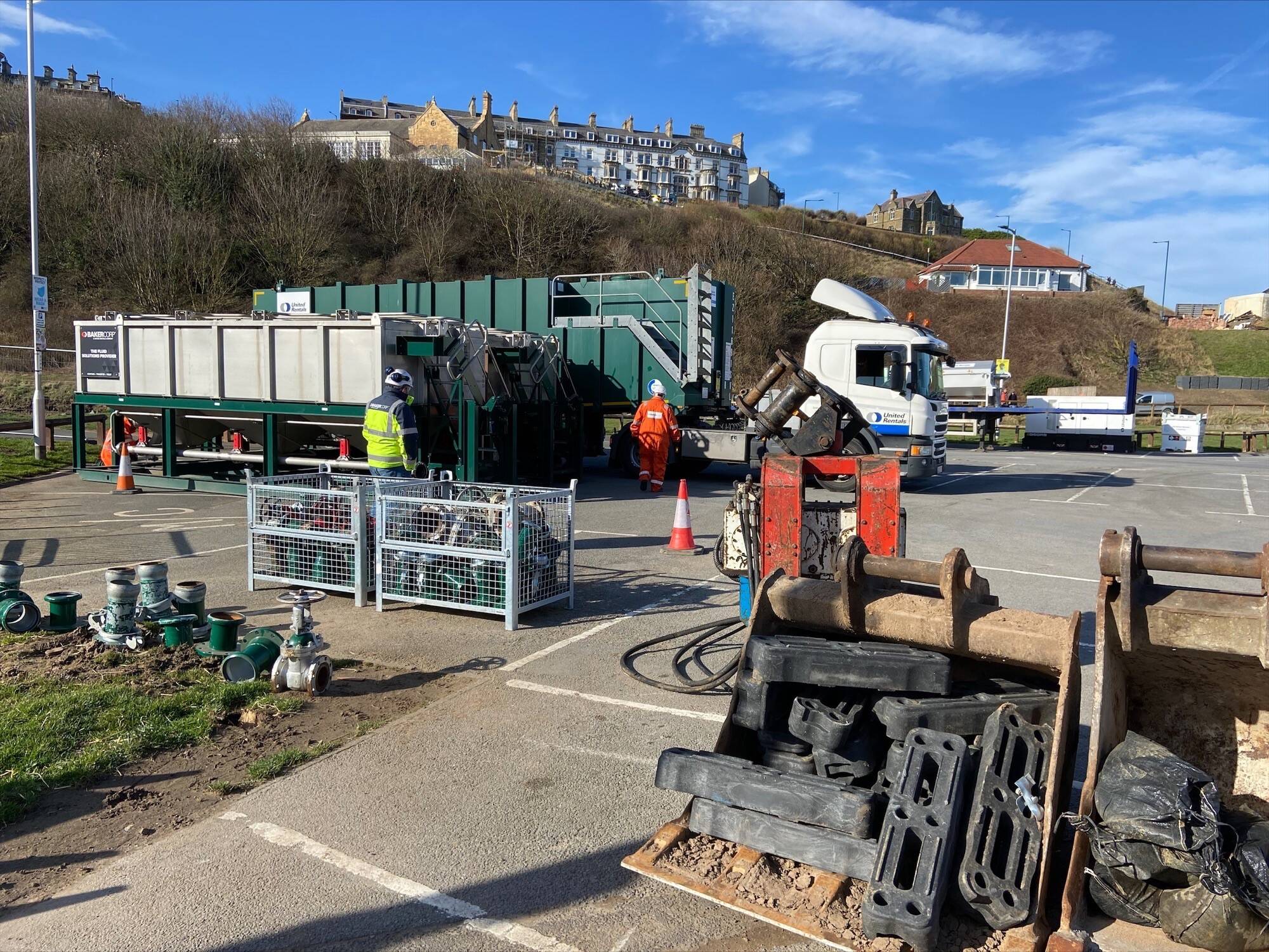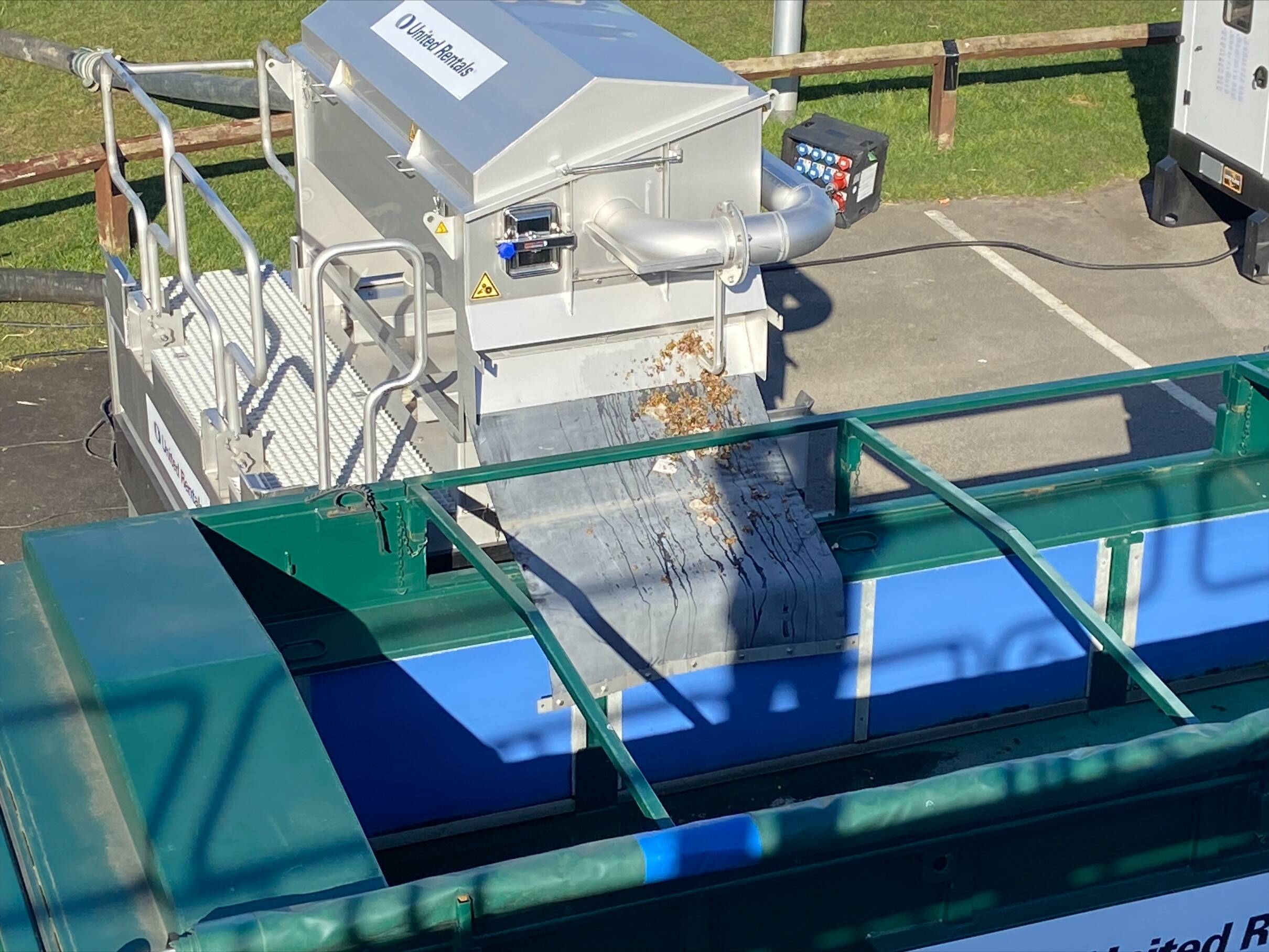You’ve reached your limit!
To continue enjoying Utility Week Innovate, brought to you in association with Utility Week Live or gain unlimited Utility Week site access choose the option that applies to you below:
Register to access Utility Week Innovate
- Get the latest insight on frontline business challenges
- Receive specialist sector newsletters to keep you informed
- Access our Utility Week Innovate content for free
- Join us in bringing collaborative innovation to life at Utility Week Live

When a pipe was struck during routine maintenance near a popular beach, Northumbrian Water’s teams swiftly mobilised to construct a mini treatment works in 48 hours to protect the beach and public from sewage. Treatment works manager Frank Errington talked Utility Week through the engineering feats required for the rapid repairs.
Picture the scene: Saltburn is a popular Yorkshire beach with an adjacent car park next to a miniature golf course accessed via a narrow road. Several meters beneath this tourist hotspot run wastewater pipes to an nearby pumping station.
During planned extension to the car park, a third party council worker was driving steel piles down and struck what was initially believed was a network gravity main. When Northumbrian’s team arrived on site, they quickly realised it was a far more complex than first thought and called Errington in.

“It was clear when I got to site it was pumped sewage so I could see it was the rising main that had been compromised,” he explained. “The number one priority was to protect customers and the environment as much as we could so we cordoned the beach off on the first day.” After this the company enacted its standard emergency response for burst rising mains that meant putting in calls to contractors across the northeast to mobilise a small army of experts and engineers.
The damaged pipe runs from a pumping station under Skillet Beck, which flows between the busy beach carpark and a miniature golf course. Therefore the repair had to be made in the stream bed.
“There’s no way of diverting the main: it’s a highly pressured 600mm diameter GRP (glass reinforced plastic) wired rising main, which is fairly special because it has wires to over each joint to keep the bolts in place,” Errington said. He noted that the pressure is generally 4.8 to 5 bar, which could pump liquid up to 49 metres into the air.
Engineers had to divert a section of the stream to make the damaged pipe accessible.
Tankers, hay bales and hundreds of tonnes of sand and whinstone stone were brought in to stem the flow and act as a rudimentary filtration to catch debris released by the waste pipe.
“We had to empty the main while continuing to pump properly otherwise it would have flooded across Saltburn beach. The flow meant we couldn’t just set up a new pumping station on the site so we utilised the existing one by disconnecting two of the four pumps, connecting temporary overland pipework to existing pumps,” Errington said.
 This alone, he explained, was a significant achievement in itself because the pumps were “looking for” signals back from the pipework.
This alone, he explained, was a significant achievement in itself because the pumps were “looking for” signals back from the pipework.
“As I was leaving the site on the second night, I realised we needed to really think outside the box, I called a partner company United Rentals first thing on Friday and asked if they could build me a very large primary tank that could get the solids out as the first point of treatment.”
A team arrived and got to work straight away on a treatment solution. Six articulated vehicles, three 72,000 litre tanks, two sludge and one of only two rotary drum screens in the country arrived on site on the Saturday morning that gave the capability to treat 150,000 litres of wastewater each hour.
The sewage had to be removed from the broken point. Errington explained the health and safety challenges: “We couldn’t go down and dig at that kind of pressure and flow, so we modified the pipework to direct the flow towards the treatment process we put on the site. It’s processing up to 150,000 litres an hour, depending on the flow.”
“It’s fair to say that to build a treatment plant in 48 hours is no mean feat,” he said. “This was a third party incident that caused a non-planned outage – whatever it costs we have to fix it for our customers and the environment.”
The Environment Agency has been supportive of the company and its partners’ work to minimise impact from the damaged pipe.
Having put in place a stopgap solution, the teams needed a permanent fix. “We’re excavating in two locations to find the line of the main and where the bends are. We have teams of engineers looking at the best options, which may be mass pouring concrete. Our teams are ready to finish the final repair but we need to get the design nailed. As we explore sections of pipe we will get a clearer understanding of what needs doing.”
A week on and although the pop-up treatment works has eased the initial pressure, the break in the main is proving more complicated to repair than first thought because of the pipe’s location, depth, and the specialist fittings needed.
The team are digging almost five metres into the ground to expose the pipe and assess what fittings are required. These will then have to be manufactured specially.
Given the recent storms, Errington said weather was never far from the teams’ minds. “In the background we had network teams involved to understand what storage capacity there is available in the network. There are effectively three gravity mains feeding into the sewage pumping station. When it was designed someone had foresight to put huge attenuation tanks in place,” he explained. On the Saltburn side there is potential to hold up to six hours worth at normal flow rate and the station has an emergency overflow system.
“We have a backup plan but we have a real focus on weather,” he concluded.
Please login or Register to leave a comment.